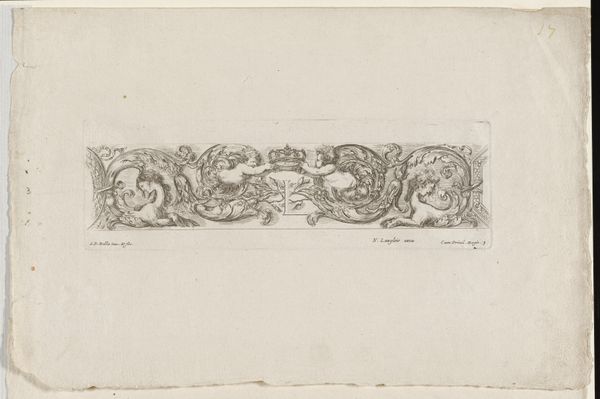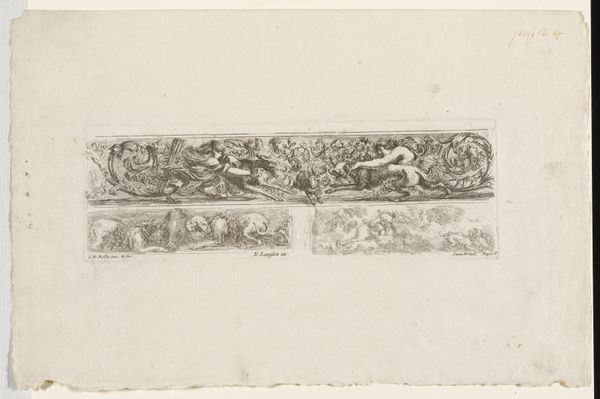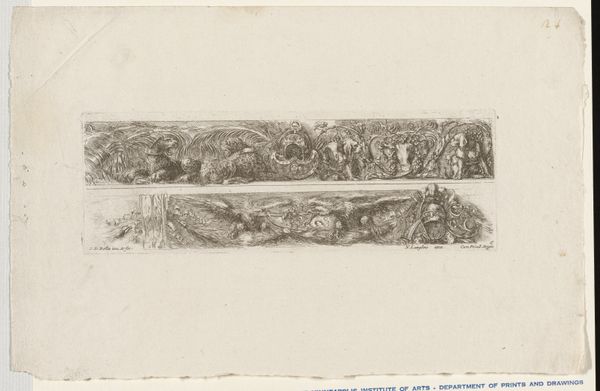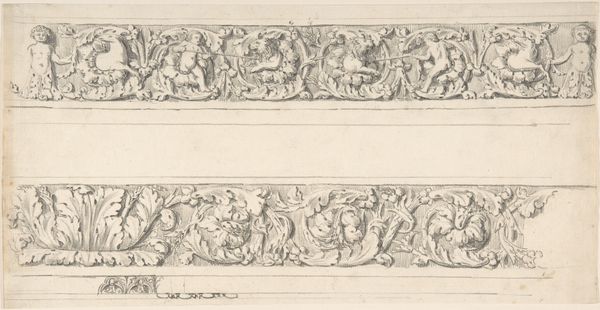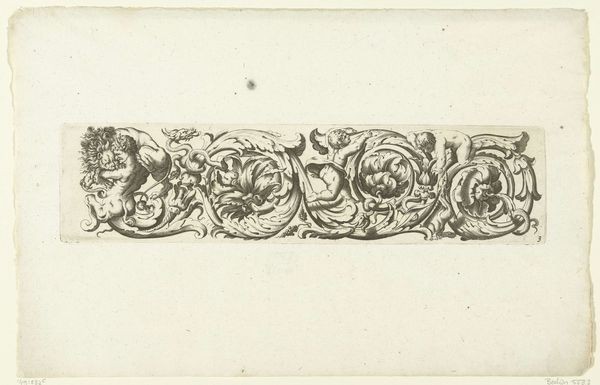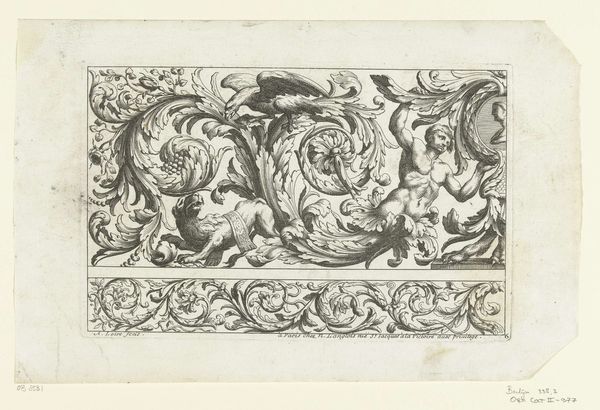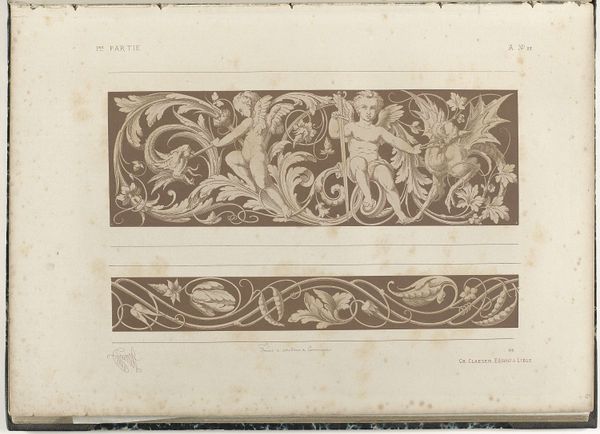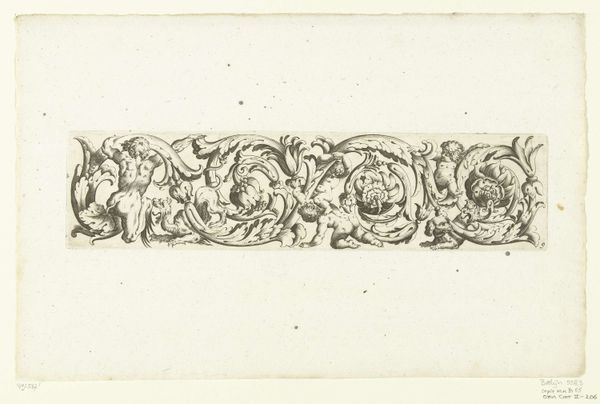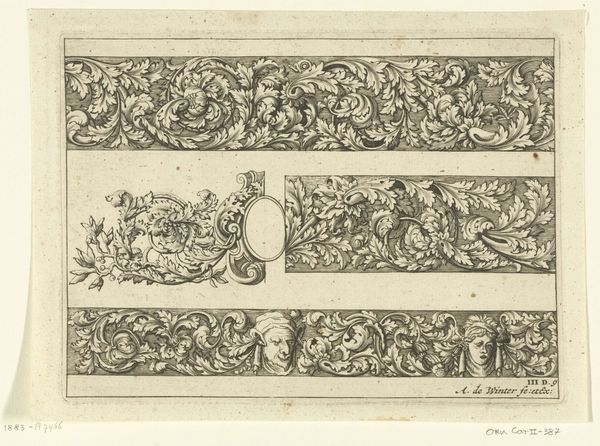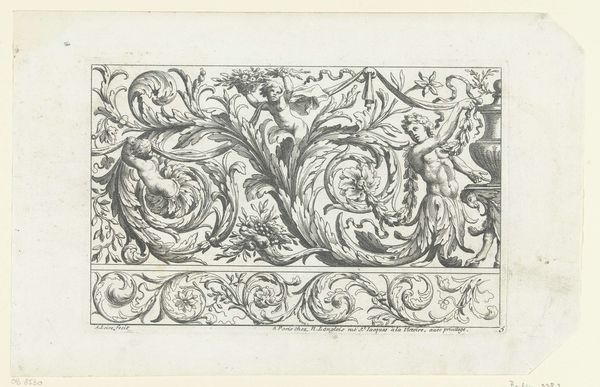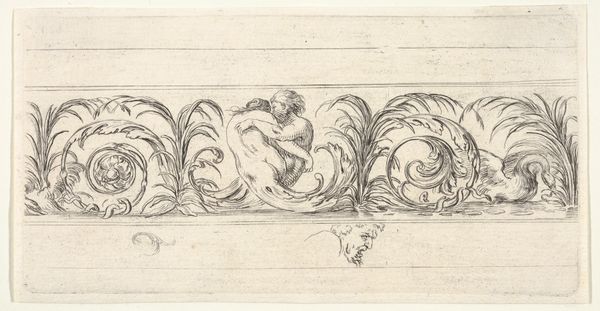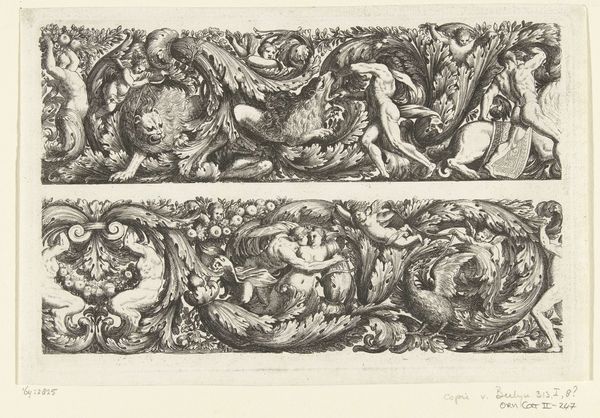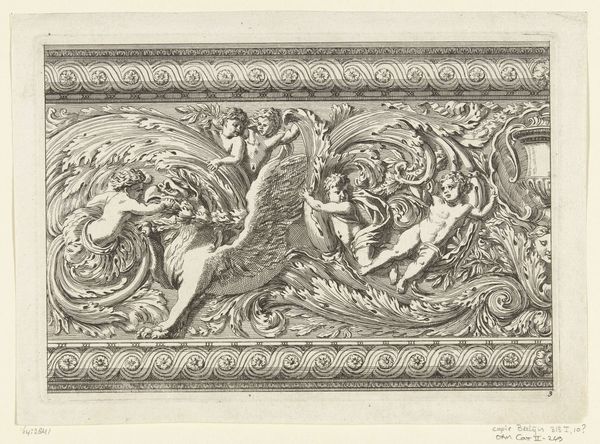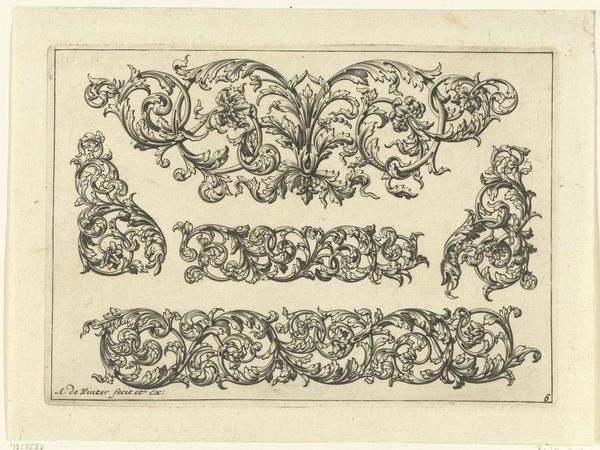
print, etching, engraving
#
toned paper
#
light pencil work
# print
#
pen sketch
#
etching
#
incomplete sketchy
#
personal sketchbook
#
ink drawing experimentation
#
pen-ink sketch
#
pen work
#
sketchbook drawing
#
italy
#
sketchbook art
#
engraving
Dimensions: 3 x 9 1/2 in. (7.62 x 24.13 cm) (image)8 5/8 x 13 3/8 in. (21.91 x 33.97 cm) (sheet)
Copyright: Public Domain
Editor: So, here we have Stefano della Bella's "Plate 4" from the 17th century, a print made with etching and engraving. It’s quite delicate, almost like a study. I'm struck by how linear it is; the composition reminds me of ornamental friezes, but there's also an unfinished quality about it. What catches your eye? Curator: Indeed. One notices first the stark contrast between the toned paper and the precision of the incised line. Observe how della Bella uses line weight to define form, creating a visual hierarchy even within this seemingly decorative register. What does this rigorous yet incomplete symmetry communicate to you? Editor: I suppose it feels controlled, yet somehow restless. The two horizontal panels mirror each other, but with slight variations. It makes it not feel "complete" somehow...like I want to see a finished design. Curator: Precisely. The beauty here resides not in completion but in process, revealing the underlying structure and formal relationships. Consider the semiotics of the central motifs - the lion, the medallions, and the griffins. How do they contribute to the overall visual narrative? Editor: Well, the lion is regal, maybe hinting at power. The griffins, being mythical, bring an element of fantasy and imagination. Curator: And observe how their placement—symmetrical, almost heraldic—functions within the overall design. Della Bella masterfully employs a limited vocabulary of form and line to construct a world that exists solely within the boundaries of the plate. Do you find this limitation freeing or restrictive? Editor: I hadn't thought about that tension before. Now that I think about it, seeing how the forms interlock in this medium does change how I might imagine translating them to three dimensions, giving me the same material constraints. It highlights how intention drives decisions! Curator: Exactly! By attending to these intrinsic qualities – the line, the form, the composition, the interplay of symmetry and asymmetry – we can glean a deeper understanding of della Bella's artistic vision and its execution. Editor: This exercise really brought a focused structure that unlocks visual art. Curator: Yes, close looking transforms the seemingly familiar!
Comments
No comments
Be the first to comment and join the conversation on the ultimate creative platform.
